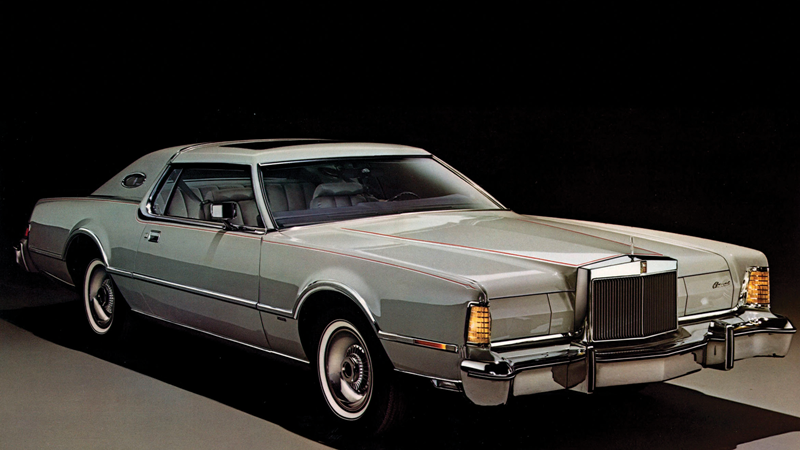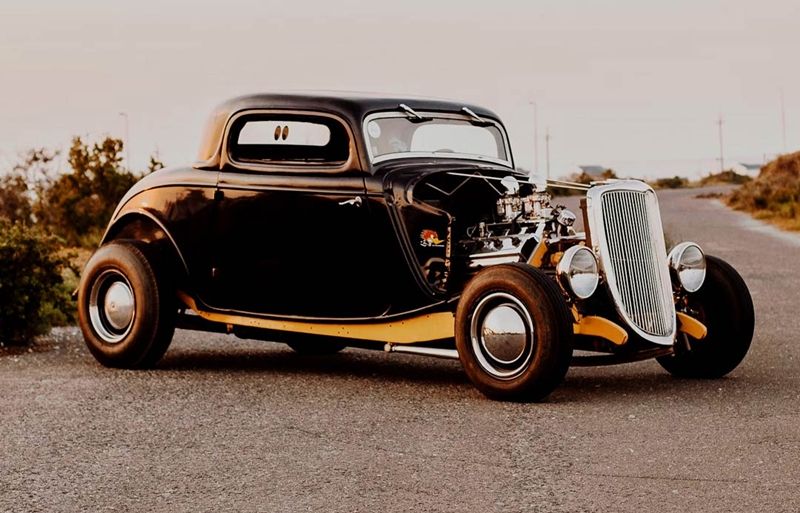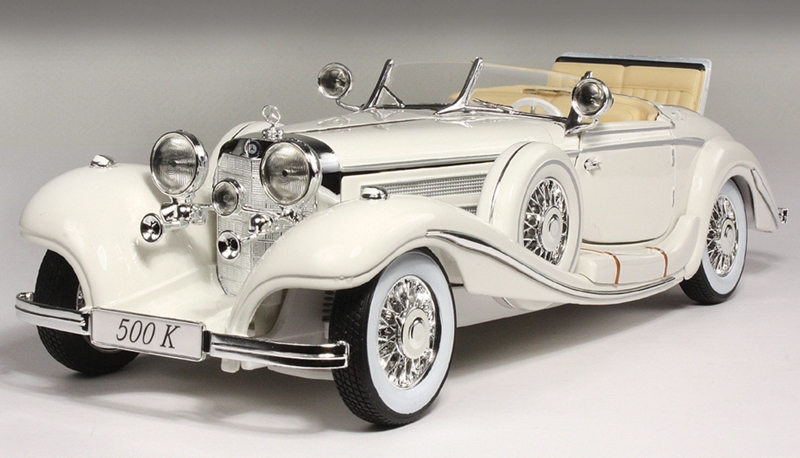Picture this: It’s 1955, and you’re cruising down Main Street in a gleaming Chevrolet Bel Air, chrome bumpers catching the sunlight, while Elvis croons from the radio. The decade of the 1950s wasn’t just about poodle skirts and drive-in theaters – it was the golden era that transformed American automotive culture forever. Cars in the 1950s represented more than transportation; they embodied freedom, prosperity, and the American Dream on four wheels.
The post-war economic boom created the perfect storm for automotive innovation. Families had disposable income, suburbs were expanding, and manufacturers were eager to showcase their engineering prowess. Cars in the 1950s were not only a product of economic growth but also a canvas for design and ambition, giving birth to some of the most iconic vehicles ever produced—models that still influence automotive culture today.
Did You Know? Fascinating 1950s Car Facts
The 1959 Cadillac Eldorado’s tail fins were taller than a Volkswagen Beetle! These dramatic fins reached 42 inches in height, making them the tallest ever produced by any manufacturer.
Chrome was king: Premium 1950s cars used over 40 pounds of chrome per vehicle – enough to make a small motorcycle! The chrome alone on a 1957 Chevrolet Bel Air cost more than an entire economy car from the 1940s.
Drive-in theaters exploded: From just 820 drive-ins in 1948 to over 4,063 by 1958 – a 400% increase! They were specifically designed around the dimensions of 1950s cars.
The Chrysler 300 was America’s first true muscle car: With 300 horsepower in 1955, it was more powerful than most sports cars of the era and could hit 130 mph – faster than many modern economy cars!
Two-tone paint wasn’t just style: It actually helped hide dirt and wear better than solid colors, making cars look newer longer in an era before frequent car washes.
A fully-loaded 1959 Cadillac cost more than most people’s houses: At $7,400, it was equivalent to about $75,000 today – but the average American home cost only $12,400!
Table of Contents
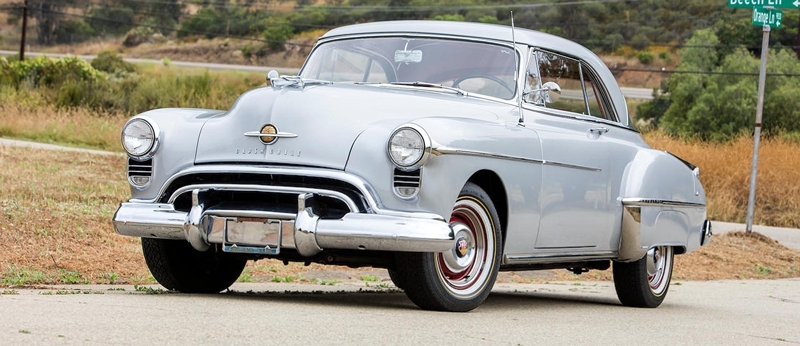
The Birth of Modern Car Culture
The relationship between Americans and their automobiles reached a new level of intimacy during the 1950s. Car ownership among families jumped from 59% in 1950 to 77% by 1959, with two-car families increasing by 300% during the decade. Unlike previous decades where cars were primarily functional, cars in the 1950s became extensions of personality and status symbols. Manufacturers understood this shift and began designing vehicles that appealed to emotions rather than just practical needs.
The Drive-In Lifestyle
Drive-in restaurants, movie theaters, and shopping centers sprouted across the landscape, all designed around automobile accessibility. The drive-in theater phenomenon alone exploded from just 300 locations in 1946 to over 4,063 by 1958, perfectly accommodating the car-centric lifestyle. The suburban lifestyle demanded reliable transportation, and cars in the 1950s were central to this cultural transformation. Car ownership became almost mandatory for participating in American social life. Young people especially embraced this car-centric culture, with vehicles serving as mobile hangouts and symbols of independence.
The decade saw the rise of car clubs, racing culture, and the hot rod phenomenon. Teenagers and young adults began modifying their vehicles, creating a subculture that celebrated automotive customization. This grassroots movement helped define cars in the 1950s not just by design, but by passion—laying the groundwork for the muscle car era of the 1960s.
1950s Car Manufacturing Statistical Data
Design Revolution: Chrome, Fins, and Fantasy
When people think of cars in the 1950s, they immediately envision chrome bumpers, tail fins, and two-tone paint schemes that made every vehicle look like it could take flight. This wasn’t accidental – designers deliberately incorporated aerospace aesthetics into automotive design, reflecting America’s fascination with jets and rockets during the Space Age.
Harley Earl, General Motors’ legendary design chief, pioneered many of these styling cues. His philosophy centered on creating “longer, lower, wider” vehicles that projected power and sophistication. The introduction of tail fins, inspired by the Lockheed P-38 Lightning fighter aircraft, became the decade’s most recognizable design element.

Chrome wasn’t just decorative; it represented luxury and attention to detail. Chrome usage in automobiles increased dramatically throughout the decade, from an average of 15–20 pounds per car in 1950 to over 44 pounds on premium vehicles like the 1959 Cadillac by decade’s end. Manufacturers used chrome extensively on bumpers, grilles, window trim, and interior accents. The total industry chrome usage reached 180,000 tons by 1957, with the more chrome a car featured, the more prestigious it appeared. This obsession with visual impact sometimes overshadowed practical considerations, but it created some of the most beautiful cars in the 1950s ever manufactured.
Color options expanded dramatically during this period. Two-tone paint combinations became standard, allowing owners to personalize their vehicles. Cars in the 1950s often showcased bold color pairings—turquoise and white, pink and gray, or red and white—color schemes that perfectly captured the optimistic spirit of the era.
Also read: Malaise Era Cars: 10 Shocking Truths
Iconic Models That Defined the Decade
Several models from this era have achieved legendary status, representing the pinnacle of 1950s automotive design and engineering. Cars in the 1950s like the Chevrolet Bel Air epitomized American automotive excellence with distinctive styling and reliable performance. With total production reaching 1,555,312 units across all body styles in 1957 alone, the Bel Air became the aspirational vehicle for middle-class families.
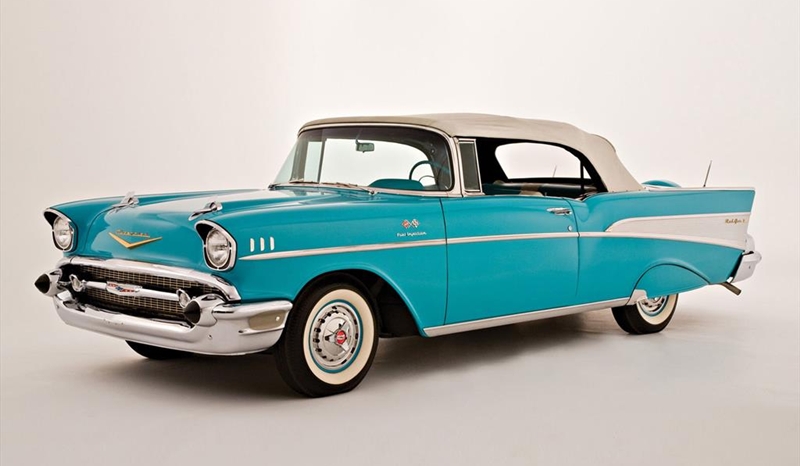
Ford’s Thunderbird, launched in 1955 with 16,155 units produced that first year, created an entirely new market segment – the personal luxury car. Unlike traditional sports cars, cars in the 1950s like the T-Bird offered comfort and style without sacrificing performance. Its removable hardtop and elegant proportions made it an instant classic, with an original MSRP of $2,944 competing directly with Chevrolet’s Corvette.
Speaking of the Corvette, Chevrolet’s fiberglass sports car debuted in 1953 with extremely limited production – only 300 units, all painted Polo White. Initially underpowered with its Blue Flame six-cylinder engine, the Corvette found its identity in 1955 with the introduction of Chevrolet’s small-block V8, marking a turning point for cars in the 1950s focused on performance and innovation.
Cadillac represented the ultimate in American luxury during the decade, with models like the Eldorado showcasing cutting-edge technology and opulent styling. The exclusive 1959 Eldorado Convertible, with only 2,199 units produced and priced at $7,401 (when the average worker earned $4,137 annually), cost more than many people’s houses. Among all cars in the 1950s, Cadillac’s extravagant tail fins stood tallest—literally—with the 1959 Eldorado’s dramatic rear design reaching 42 inches high.
The Rise of Performance: Early Muscle Car DNA
While the true muscle car era wouldn’t arrive until the 1960s, the seeds of cars in the 1950s were planted during this decade. Horsepower figures climbed steadily from an average of 100–120 hp in 1950 to 200–250 hp by 1959, with performance acceleration improving dramatically. A typical 1950 Chevrolet required 19.2 seconds to reach 60 mph, while the 1955 Chevrolet V8 accomplished the same feat in just 11.8 seconds. Manufacturers began experimenting with high-performance engines and lightweight bodies, creating cars in the 1950s that prioritized speed and acceleration over comfort and luxury.
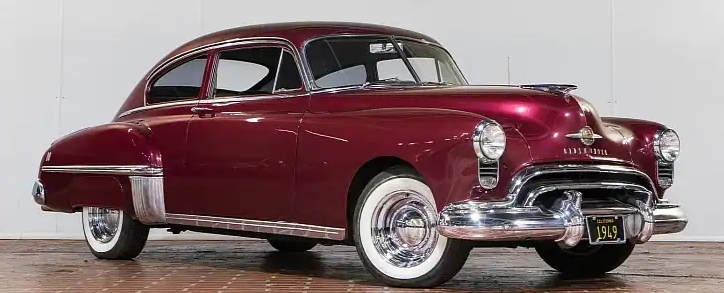
Chrysler led the charge with their FirePower Hemi V8 engine, introduced in 1951. This revolutionary powerplant featured hemispherical combustion chambers that provided exceptional breathing capabilities and power output. The 300 series, launched in 1955 with only 1,725 units produced, combined this potent engine with aggressive styling, creating what many consider the first true muscle car. The 1957 Chrysler 300C achieved an impressive 0–60 mph time of 8.9 seconds and produced a stunning 375 horsepower – making it one of the most powerful cars in the 1950s.
Oldsmobile’s Rocket 88, introduced in 1949 but refined throughout the 1950s, deserves recognition as a performance pioneer. By placing their powerful Rocket V8 engine in the lighter 88 series body, Oldsmobile created a formidable performer that dominated early NASCAR competitions. These influential cars in the 1950s set the tone for a new kind of driving excitement.
These early performance cars established the template for future muscle cars: big engines, lightweight bodies, and aggressive styling. While they didn’t achieve the extreme power levels of 1960s muscle cars, they proved that cars in the 1950s could deliver thrilling performance without sacrificing reliability.
Racing and Competition: The Need for Speed
The 1950s witnessed the emergence of organized racing as a major American sport, closely tied to the rise of cars in the 1950s as performance machines. NASCAR, founded in 1948, gained significant traction during this decade, growing from 19 races in its inaugural 1950 season to 44 races by 1959. Manufacturers recognized racing’s marketing potential, with the phrase “race on Sunday, sell on Monday” becoming the automotive industry’s unofficial motto. Hudson Hornet dominated early NASCAR competition with 27 victories between 1951–1954, while Oldsmobile’s Rocket 88 captured 20 wins from 1949–1951—proof that cars in the 1950s could combine showroom appeal with track-ready capability.

Stock car racing’s popularity exploded because fans could purchase vehicles similar to those competing on track. This connection between showroom and racetrack drove innovation, as manufacturers developed high-performance options to maintain competitive advantages in both markets. Cars in the 1950s became tools for both personal pride and motorsport glory.
Drag racing also emerged during this period, evolving from informal street races to organized competitions. The National Hot Rod Association (NHRA) was founded in 1951, providing structure and safety standards for the sport. Drag racing’s emphasis on straight-line acceleration perfectly matched American automotive preferences and highlighted the growing performance potential of cars in the 1950s.
Speed records tumbled throughout the decade, with Indianapolis 500 winning speeds increasing from 124.002 mph in 1950 to 135.857 mph by 1959. Stock cars achieved remarkable performance, with a 1957 Pontiac Bonneville setting a stock car record of 145.3 mph. European road racing gained American attention through events like the Sebring 12 Hours, first held in 1952, influencing domestic design and engineering.
Technological Innovations That Changed Everything
The 1950s introduced numerous technological advances that became standard features in cars in the 1950s. Automatic transmissions, previously available only on luxury vehicles, became increasingly common across all price ranges. General Motors’ Hydra-Matic and Ford’s Ford-O-Matic made driving more accessible and comfortable for the average American driver.
Power steering and power brakes transformed the driving experience, especially important as cars in the 1950s grew larger and heavier. These innovations reduced driver fatigue and improved safety, particularly during parking and emergency maneuvers.
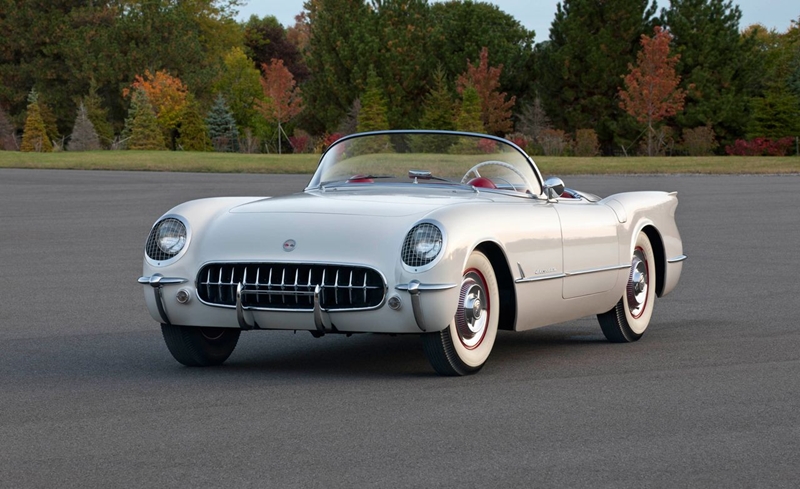
Air conditioning began appearing in high-end vehicles, though it remained expensive and somewhat unreliable. Still, the concept of climate-controlled interiors marked a significant step toward modern automotive comfort standards.
Radio technology also saw major improvements, with AM radios becoming standard equipment in most vehicles. Some manufacturers experimented with early FM receivers and even primitive tape players, offering a glimpse into the future of in-car entertainment systems that would later become central to the driving experience.
Manufacturing and Industry Changes
The automotive industry underwent significant structural changes during the 1950s. The “Big Three” – General Motors, Ford, and Chrysler – consolidated their dominance over the American market, with GM commanding a dominant 50.4% market share by 1955, Ford holding 27.9%, and Chrysler capturing 16.9%. Smaller manufacturers like American Motors (1.9%) and Studebaker-Packard (1.7%) struggled to compete against these economies of scale, while independent companies like Nash, Hudson, and Kaiser faced increasing pressure. This concentration of power shaped the design, pricing, and availability of cars in the 1950s.
Assembly line efficiency reached new heights through improved manufacturing techniques and automation. The introduction of transfer machines and other automated equipment reduced production costs while improving quality consistency. These advances allowed manufacturers to offer more features at competitive prices, boosting the appeal of cars in the 1950s to a growing consumer base.

Labor relations evolved during this period, with the United Auto Workers (UAW) negotiating significant improvements in wages and working conditions. The 1950 “Treaty of Detroit” between GM and the UAW established patterns for industry-wide labor agreements, including health insurance and pension benefits.
Planned obsolescence became a deliberate strategy, with manufacturers introducing annual model changes to encourage frequent vehicle replacement. While this drove innovation, critics argued it led to unnecessary waste and artificial product differentiation—issues that remain part of the legacy of cars in the 1950s.
Cultural Impact and Social Significance
Cars in the 1950s represented more than mechanical devices; they embodied cultural values and social aspirations. Vehicle ownership became synonymous with success and social mobility, particularly for families transitioning from urban to suburban lifestyles.
The automobile enabled new forms of entertainment and social interaction. Drive-in theaters reached their peak popularity during this decade, accommodating the car-centric lifestyle while providing affordable family entertainment. Similarly, drive-in restaurants created casual dining experiences centered around automotive convenience—core features of life with cars in the 1950s.
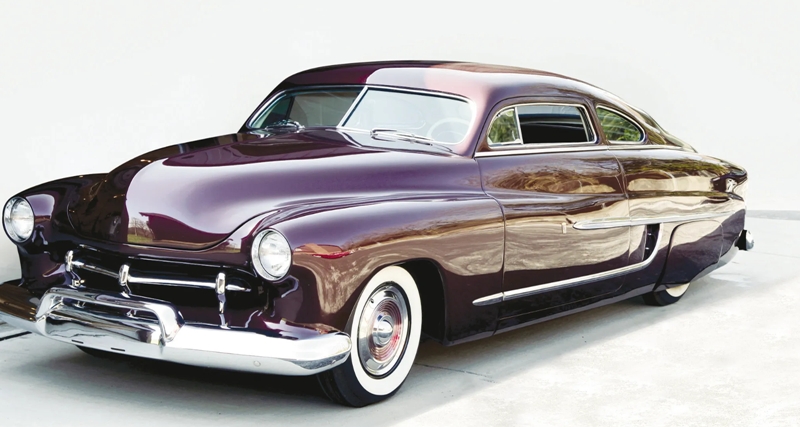
Youth culture embraced automobiles as symbols of independence and rebellion. Hot rodding became a legitimate hobby, with magazines like Hot Rod and Motor Trend providing technical information and cultural validation. Car clubs formed around specific makes, models, or interests, creating communities that transcended traditional social boundaries fostered by cars in the 1950s.
Also read: 7 Amazing Hot Rod History Secrets That Will Blow Your Mind
The decade’s car culture influenced fashion, music, and lifestyle choices. Automotive styling cues appeared in furniture design, architecture, and consumer products. The streamlined, chrome-adorned aesthetic became a defining characteristic of 1950s American design philosophy.
Regional Variations and International Influence
While Detroit dominated American automotive production, regional preferences and influences still shaped the industry. Cars in the 1950s reflected local culture as much as national trends. California‘s car culture, influenced by Hollywood glamour and year-round driving weather, emphasized style and performance. The state became a hotbed for custom car building and racing innovation.
European automotive influence remained limited but significant. Sports cars from manufacturers like Jaguar, MG, and Porsche attracted enthusiasts seeking driving experiences unavailable from domestic manufacturers. These imports influenced American sports car development and introduced concepts like independent suspension and overhead valve engines—innovations that subtly impacted cars in the 1950s.
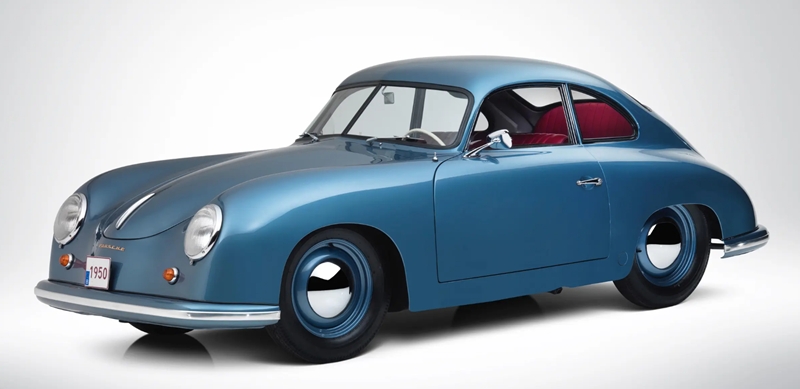
The American automotive industry also began exporting vehicles and technology to international markets during this period. Ford and General Motors established manufacturing facilities in various countries, spreading American automotive design philosophy globally while adapting to local preferences and regulations.
Economic Impact and Market Dynamics
The automotive industry’s economic influence expanded dramatically during the 1950s, with national fuel consumption increasing from 51.5 billion gallons in 1950 to 69.5 billion gallons by 1959. Cars in the 1950s were central to this transformation, driving demand across industries. Vehicle production supported millions of jobs directly and indirectly, from steel and rubber manufacturing to dealership operations and service industries. Despite average fuel economy hovering around 13.5 miles per gallon and premium gas costing 23 cents per gallon in 1955, cars in the 1950s helped fuel post-war economic prosperity.
Consumer Financing
Consumer financing evolved to accommodate automobile purchases, with manufacturers establishing their own credit companies. GMAC (General Motors Acceptance Corporation) and Ford Credit made vehicle ownership accessible to broader segments of the population, establishing installment buying as a normal practice for cars in the 1950s.
The used car market matured during this decade, creating a secondary economy around automotive sales and service. Independent dealers, service stations, and parts suppliers formed an extensive network supporting vehicle ownership throughout their lifecycles.
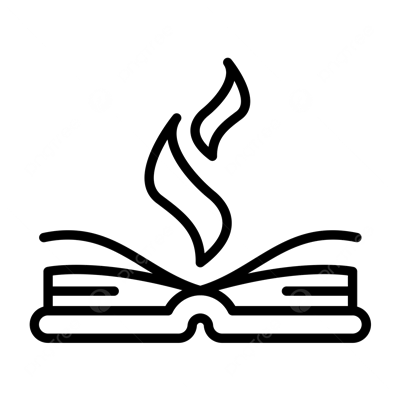
Myths About 1950s Cars
Several persistent myths surround 1950s automotive history that deserve clarification.
- The first major misconception suggests that all cars from this era were unreliable and required constant maintenance. While maintenance intervals were shorter than modern standards, well-maintained vehicles from quality manufacturers could provide years of dependable service.
- Another common myth claims that 1950s cars were universally gas-guzzlers with terrible fuel economy. While large engines and heavy bodies did impact efficiency, many economy models achieved respectable mileage for their era. The Nash Rambler, for example, was specifically marketed for its fuel efficiency.
- Some enthusiasts believe that all 1950s cars featured powerful V8 engines. In reality, six-cylinder engines remained common, particularly in economy models and entry-level vehicles. V8 engines were often optional equipment that increased vehicle prices significantly.
- The myth that 1950s cars were built to last forever overlooks the reality of planned obsolescence and material limitations. While some components were more robust than modern equivalents, body rust, electrical problems, and mechanical wear were common issues that required regular attention.
Performance Comparison: Then vs. Now

Popular 1950s Car Models by Year

Frequently Asked Questions
-
What made 1950s cars so distinctive in design
The distinctive appearance of cars in the 1950s resulted from deliberate styling choices that emphasized luxury, optimism, and technological progress. Designers incorporated aerospace-inspired elements like tail fins, extensive chrome trim, and streamlined bodies that projected power and sophistication. The era’s prosperity allowed manufacturers to prioritize aesthetics alongside functionality, making cars in the 1950s iconic symbols of their time.
-
Were cars in the 1950s really better built than modern vehicles?
This depends on how you define “better built.” Cars in the 1950s featured heavier construction and simpler mechanical systems that were easier to repair. However, modern vehicles surpass them in reliability, safety, fuel efficiency, and overall performance. While some cars in the 1950s have survived decades, this often represents survivorship bias rather than universal quality.
-
What was the most popular car of the 1950s?
The Chevrolet Bel Air dominated sales charts throughout much of the decade, representing the ideal combination of style, performance, and affordability. Ford models also achieved significant sales success, while Buick consistently ranked among the top three manufacturers. Popularity varied by region and economic segment, but the Bel Air remains a standout example among cars in the 1950s.
-
How much did cars cost in the 1950s?
A typical mid-range sedan cost between $1,500–$2,500 in 1950s dollars, equivalent to approximately $15,000–$25,000 today when adjusted for inflation. Luxury vehicles could cost $3,000–$5,000 or more, while economy models started around $1,200. Options packages could add significantly to base prices, giving buyers a range of choices among cars in the 1950s.
-
What safety features did cars in the 1950s have?
Safety features were minimal by modern standards. Most cars in the 1950s included basic seat belts only as optional equipment late in the decade. Safety glass was standard, but features like padded dashboards, collapsing steering columns, and airbags were decades away. The focus was on style and performance rather than occupant protection.
-
How fast could cars in the 1950s go?
Most cars in the 1950s had top speeds between 85–110 mph, though high-performance models could exceed 120 mph. However, acceleration was generally slower than modern vehicles, with typical 0–60 mph times ranging from 10–15 seconds. Racing-oriented vehicles achieved better performance but remained exceptions rather than the norm.
Need a mechanic? Find one on the Mobile Mechanic Directory
Final Thoughts
The 1950s represented a unique moment in automotive history when optimism, prosperity, and technological capability converged to create truly memorable vehicles. Cars in the 1950s weren’t just transportation; they were rolling sculptures that captured the era’s spirit of possibility and progress.
These vehicles established design languages and cultural connections that continue influencing modern automotive development. While today’s vehicles surpass cars in the 1950s in virtually every measurable performance category, they rarely achieve the same emotional resonance or cultural significance.
The decade’s automotive legacy extends beyond specific vehicles to encompass an entire approach to car culture. The integration of automobiles into American social life, the emphasis on personal expression through vehicle choice, and the connection between automotive success and broader cultural values all trace their origins to cars in the 1950s and this transformative decade.
Understanding 1950s car culture provides insight into American society during a pivotal period of growth and change. The vehicles from this era remain popular among collectors and enthusiasts not just for their aesthetic appeal, but for their representation of a unique moment when the automobile truly became America’s favorite machine.



